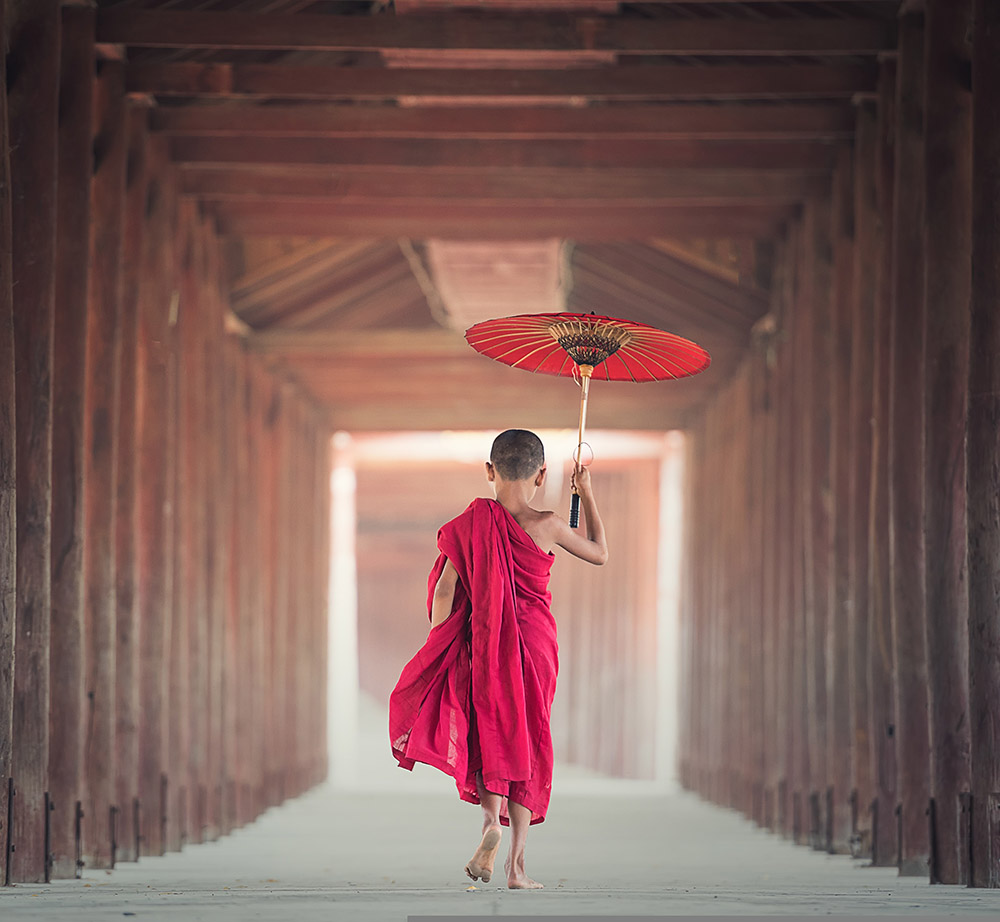Why should you visit Cambodian temples?
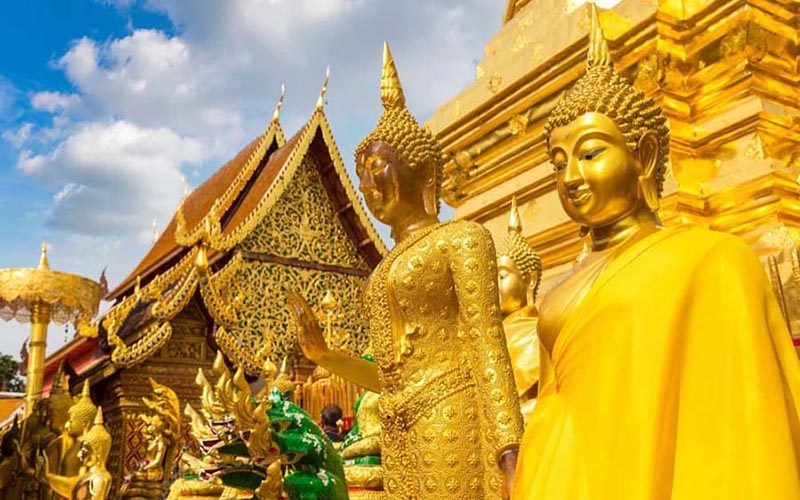
Cambodia Buddhist temples bear cultural imprints of the country
Visiting Cambodia temples is a top signature experience: Cambodia is renowned for its ancient Khmer temple complexes that hold significant cultural and historical value. Despite having gone through various historical changes, these temples have managed to blend harmoniously with the pristine natural surroundings, creating a captivating landscape that appeals to travelers, evoking a sense of adventure and exploration.
To witness architectural marvels: The temples of Cambodia are renowned for their intricate craftsmanship and grandeur. Marvel at the stunning bas-reliefs, exquisite carvings, and intricate stone masonry that adorn these sacred sites.
Experience spiritual serenity: Cambodia temples are not merely architectural wonders; they are also sacred spaces deeply rooted in spirituality. As you wander through the temple complex, you will feel a sense of tranquility and peace wash over you. Take a moment to meditate or simply sit in contemplation, allowing the serene ambiance of these holy sites to rejuvenate your mind and soul.
A chance to explore Cambodia hidden treasures: While Angkor Wat steals much of the spotlight, Cambodia is home to numerous temples that are off the beaten path. Venture beyond the tourist hotspots and discover hidden gems like Beng Mealea, Koh Ker, or Preah Vihear.
Explore the vibrant local culture: By immersing yourself in the splendid Cambodian temples, which offer a remarkable chance to engage with amiable locals and forge meaningful connections.
Top 10 Cambodia Temples to Explore
Cambodia is home to a plethora of magnificent and impressive temples scattered throughout the country. Below are the top 11 best Cambodia temples New Asia Tours recommends for you.
Angkor Wat
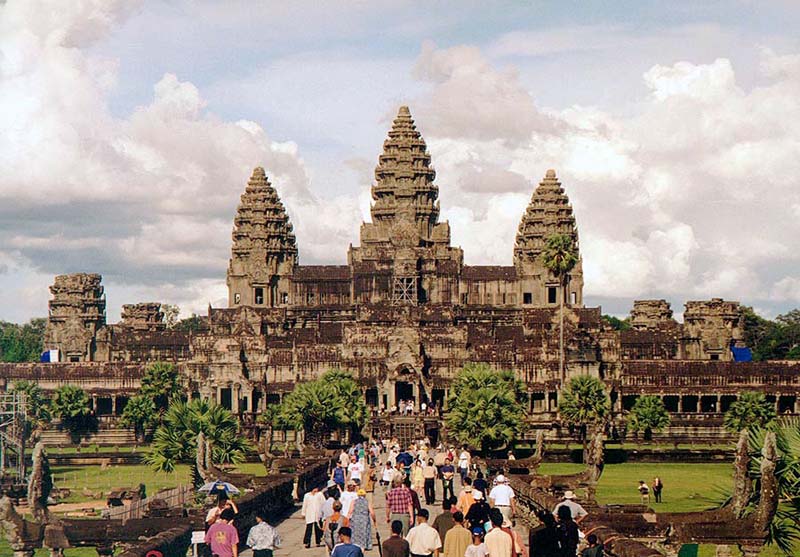
The incredible Angkor Wat Cambodia temple
-
Location: Angkor Archaeological Park, Siem Reap.
-
Ticket price for visiting most of the temples in Angkor Archaeological Park: $37 USD for 1-day pass, $62 USD for 3-day pass, and $72 USD for 7-day pass.
-
Opening time: 5:00 AM - 5:30 PM
Angkor Wat is a magnificent Cambodia ancient temple complex, often referred to as the crown jewel of Khmer architecture. Angkor Wat stands as an enduring symbol of the country's rich cultural heritage. The image of Angkor Wat is also featured on the national flag of Cambodia.
Angkor Wat, constructed in the 12th century under the reign of King Suryavarman II, stands as both the world's largest religious monument and the only temple that has been in uninterrupted use since its inception.
Angkor Wat UNESCO World Heritage site is a sprawling temple complex, serving as a brilliant testament to the Khmer Empire's grandeur. Spanning over 400 acres, the site encompasses iconic main temples along with numerous other structures, moats, and intricate carvings. Visitors can marvel at the grandeur of the five towers that dominate the skyline, representing Mount Meru, the mythical abode of the gods.
Angkor Thom
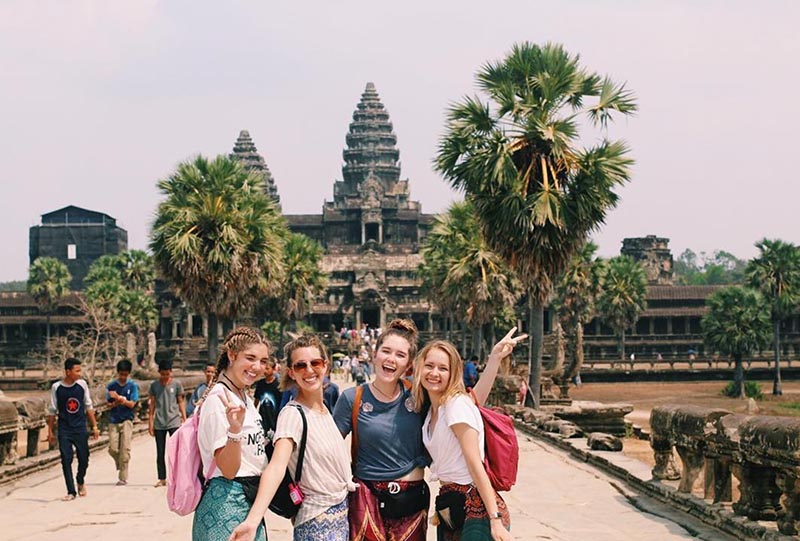
Check-in the Great City of Angkor Thom
-
Location: Angkor Archaeological Park, Siem Reap.
-
Opening time: 5:00 AM - 5:30 PM
Angkor Thom means "Great City" in Khmer, it was the capital of the Khmer Empire from the 12th to the 15th centuries. Later Angkor Thom was abandoned until it was rediscovered by the French in the 19th century. The city has five gates, each of which is guarded by a giant carved face.
Angkor Thom and Angkor Wat are two of the most famous Cambodia temples, and they are often confused with each other. Here is a few notes to distinguish the two iconic sites:
-
Angkor Thom is a city (the capital of the Khmer Empire from the 12th to the 15th centuries), while Angkor Wat is a temple complex (which was built as a Hindu temple dedicated to Vishnu).
-
Angkor Thom is located in the center of Angkor Archaeological Park, Angkor Wat is located about 2 kilometers to the northeast of Angkor Thom.
-
Angkor Thom is home to many different temples, including Bayon, Baphuon, and Phimeanakas. Angkor Wat is a single temple complex.
Bayon
![]()
The faces carved on the iconic towers of Bayon Temple Cambodia
Location: Angkor Thom, Siem Reap Province, Cambodia.
Opening time: 5:00 AM - 5:30 PM
Bayon is a noteworthy Cambodia temple. It is known for its 54 towers, each of which is topped with a four-faced head of Avalokitesvara, the bodhisattva of compassion. The faces are all slightly different, and they are said to represent the different aspects of Avalokitesvara's compassion.
The Bayon Temple, constructed during the late 12th or early 13th century under the rule of King Jayavarman VII, is situated in the heart of Angkor Thom, the capital city of his empire.
In addition to the four-faced heads, Bayon Temple is also known for its bas-reliefs. These bas-reliefs depict scenes from Hindu and Buddhist mythology, as well as scenes from everyday life in the Khmer Empire. The bas-reliefs which depict over 11,000 figures are some of the most detailed and well-preserved in Angkor.
Preah Khan
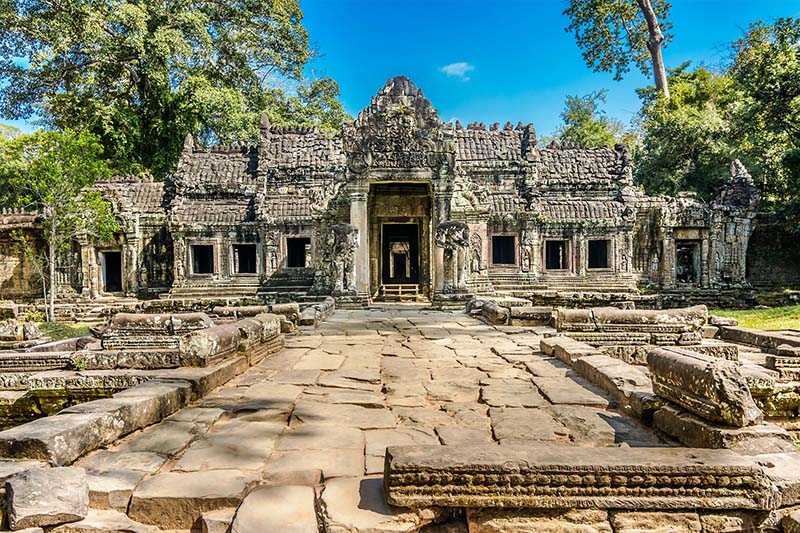
Preah Khan is one of the most atmospheric temples in Angkor as it is often shrouded in mist
Location: Angkor Archaeological Park, Siem Reap.
Opening time: 5:00 AM - 5:30 PM
Preah Khan, also known as Nagar Jayasri Temple, was constructed during the 12th century by King Jayavarman VII to pay tribute to his father, Dharanindravarman II. The temple is located about 5 kilometers North of Angkor Thom, its name in Khmer means "Sacred Sword".
The renowned Cambodia temple is one of the most atmospheric temples in Angkor, and it is often shrouded in mist and old trees. This is due to the fact that the temple is located in a dense forest, and trees with giant roots have grown up around the ancient temple, creating a sense of mystery and intrigue.
Ta Prohm
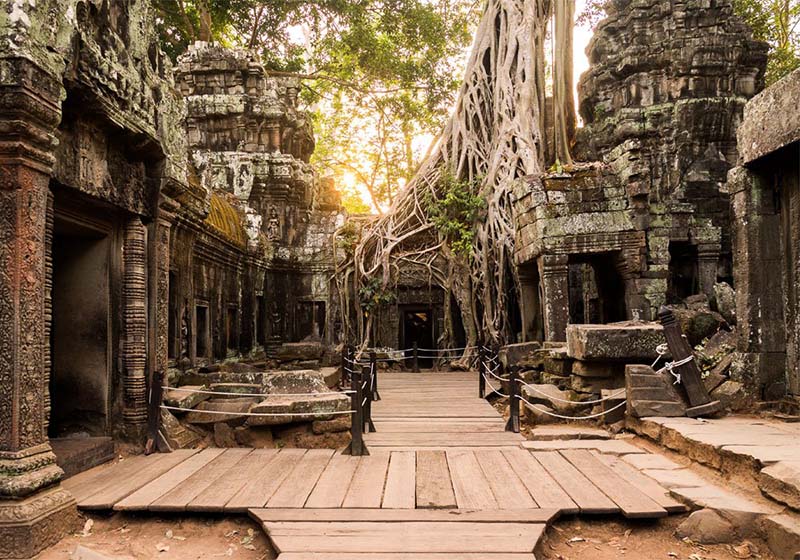
Mysterious Ta Prohm in the hue sunlight
Location: Angkor Archaeological Park, Siem Reap Province, Cambodia.
Opening time: 5:00 AM - 5:30 PM
Located in the middle of the jungle, Ta Prohm gives visitors an otherworldly feel. It has been featured in several films, including "Lara Croft: Tomb Raider".
The Cambodia temple of Ta Prohm was originally known as Rajavihara, which means "Monastery of the King". It was dedicated to Jayavarman VII's mother, Queen Jayarajdevi. The temple complex covers a vast area and originally served as a Buddhist monastery and university. Over centuries, nature has reclaimed much of Ta Prohm, with the tree roots intertwining with the ancient stones, creating a mesmerizing sight.
Banteay Srei

Banteay Srei temple dates back to the 10th century
Location: Angkor Archaeological Park, Siem Reap.
Opening time: 5:00 AM - 5:30 PM.
This Cambodia temple is devoted to Shiva, a Hindu deity, and is commonly known as the "jewel of Khmer art". The name Banteay Srei means "Citadel of Women" in Khmer. It is believed that a woman constructed this temple due to the intricacy of the carvings, which were deemed too delicate for a man's hands.
The temple is made of a pink sandstone type which is said to be quarried from a nearby mountain that is very soft and easy to carve, allowing the artists to create incredibly detailed and intricate sculptures. The bas-reliefs at Banteay Srei are some of the finest examples of Khmer art in existence.
Banteay Samre
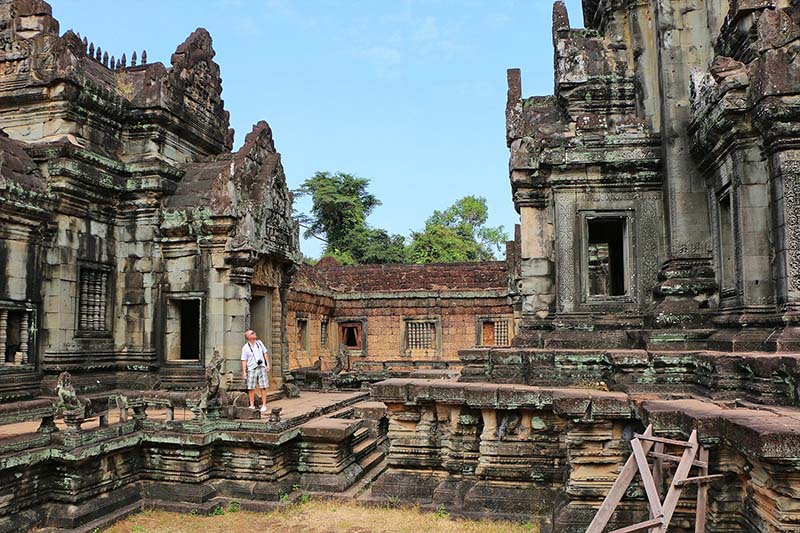
Discover Banteay Samre Cambodia Temple
Location: Angkor Archaeological Park, Siem Reap.
Opening time: 5:00 AM - 5:30 PM.
The name Banteay Samre means "Citadel of the Samré" in Khmer, and the Samré were an ancient people of Indochina. The temple is made of the same materials as Banteay Srei, including pink sandstone and laterite. The carvings at Banteay Samre are not as detailed as those at Banteay Srei, but they are still very beautiful. The temple is also surrounded by a moat, which adds to its beauty and grandeur.
The temple complex follows the typical architectural style of the Angkor period, featuring a central tower surrounded by galleries and courtyards. The main tower of this Cambodia temple, known as the central sanctuary, is dedicated to the Hindu god Vishnu.
Pre Rup
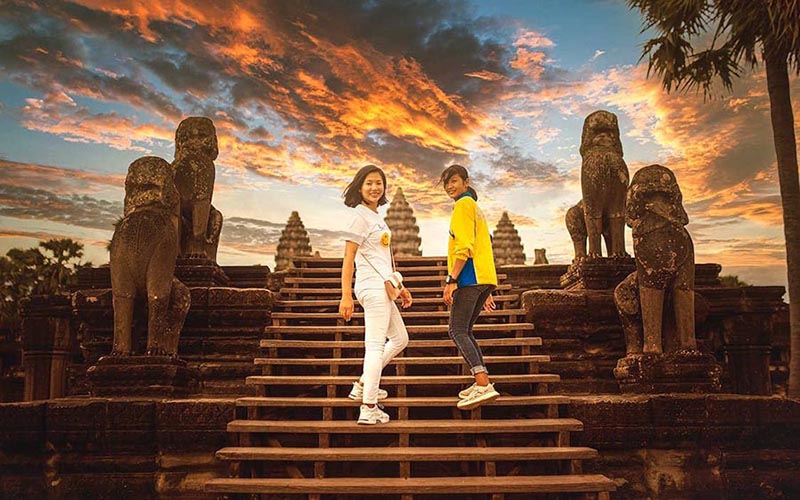
Pre Rup temple is made of brick, laterite, and sandstone
Location: Angkor Archaeological Park, Siem Reap.
Opening time: 5:00 AM - 5:30 PM.
The name Pre Rup means "Turn the Body" in Khmer, and it is thought that the temple was used for royal cremations. The temple is a three-tiered pyramid, with each tier representing a different world: the underworld, the earth, and the heavens. The top tier is the most sacred and contains a sanctuary dedicated to the Hindu god Shiva.
Pre Rup is a masterpiece of Khmer architecture and is renowned for its intricate carvings and beautiful bas-reliefs. The carvings depict scenes from Hindu mythology, as well as the life of King Rajendravarman II.
Visitors to this Cambodia temple can explore its various levels and terraces, climb the steep steps to reach the upper levels and admire the panoramic views of the surrounding area. The temple's reddish-brown color, especially during sunset, adds to its allure.
Beng Mealea
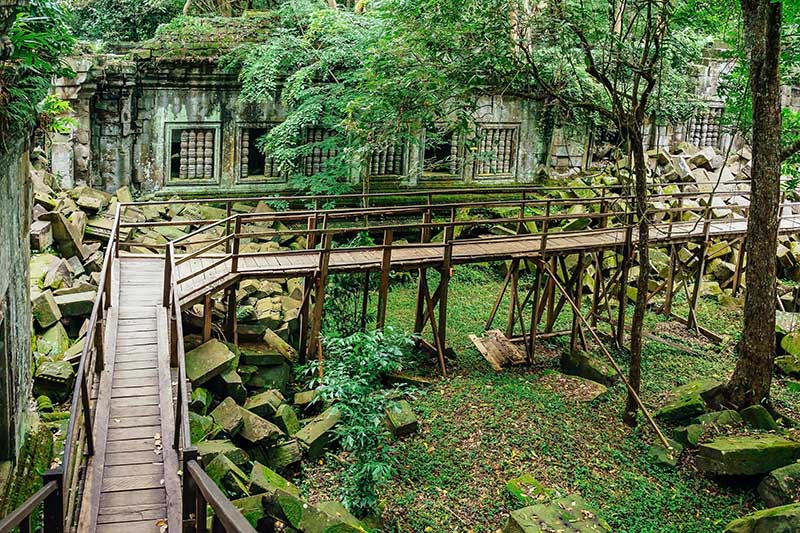
The pathway is built amid the crumbling rocks of the Beng Mealea archaeological site
Location: Beng Mealea (40 km from Siem Reap).
Open: 7:00 AM - 5:00 PM
Ticket: $5 USD.
Beng Mealea is one of the most remote and atmospheric temples in the Angkor region. It is located in a dense jungle, and its ruins are slowly being reclaimed by the trees with sprawling vines covering the walls. Beng Mealea has been called the "lost city of Angkor".
The Cambodia temple is a vast complex, and it is still under excavation. However, the ruins that have been uncovered are incredibly impressive. Beng Mealea features multiple galleries, courtyards, libraries, and towering entrance gates. Its layout resembles a vast maze, and exploring its stone corridors and overgrown paths can be an exciting and intriguing experience.
Preah Vihear
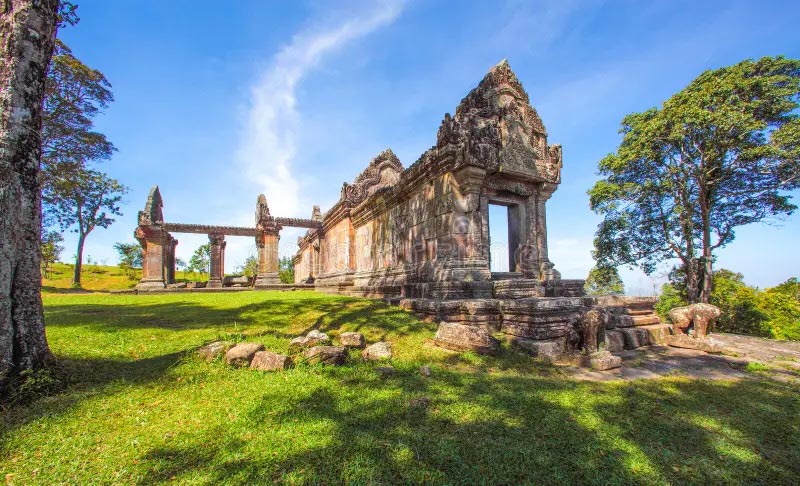
Preah Vihear Cambodia temple is located on a cliff that overlooks the plain
Location: Preah Vihear Province, Cambodia.
Open: 7:00 AM - 5:00 PM
Ticket: $10 USD.
This is an ancient Cambodia temple that was built during the Khmer Empire. It perches on the top of a 525-meter (1,722 ft) cliff in the Dangrek Mountains. In 1962, after a lengthy dispute between Cambodia and Thailand over ownership, the International Court of Justice (ICJ) in The Hague ruled that the temple is in Cambodia.
The temple is specifically devoted to Shiva, who is revered in Hinduism as the deity associated with both destruction and rebirth. Constructed in a Khmer style, this temple showcases similar architectural elements commonly found in other temples within the Angkor region, including towers, sanctuaries, and bas-reliefs.
Preah Vihear is a popular tourist destination, and it is especially popular during the dry season when the views from the temple are spectacular. The temple is also a popular spot for bird watching, and there are many different species of birds that can be seen in the area.
Must-know advices for exploring the temples of Cambodia
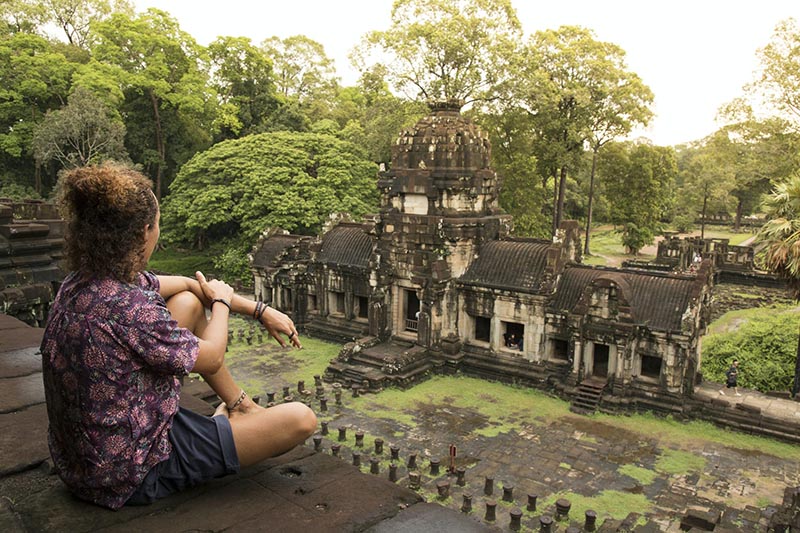
Tips for visiting Cambodia temples
The temples are sacred places for the local people, and there are a few things you need to know before visiting a temple in Cambodia:
About ticket: Make sure to keep your ticket safe. It is your proof of entry to the park, and you will need to show it to the guards at each temple. You can also purchase a 7-day pass in Angkor Archaeological Park, Siem Reap Province, which is a good option if you are planning on visiting a lot of temples.
Dress appropriately: As the temples hold religious significance, it is essential to dress respectfully. Cover your shoulders, chest, and knees. Wearing light, breathable clothing and comfortable shoes is also advisable. When entering a temple, you may need to take off your shoes or hat.
Capture the sunrise and sunset: Watching the sunrise or sunset over the temples is a breathtaking experience. Plan your visit accordingly to witness these magical moments and capture stunning photographs.
Stay hydrated: To ensure you stay hydrated while exploring Cambodia's temple complexes, where the climate can be hot and humid, it is recommended to carry a reusable water bottle and consume an ample amount of fluids.
Engage a knowledgeable guide: Hiring a knowledgeable guide can enhance your experience while discovering Cambodia temples. They can share historical and cultural insights, help navigate the complex, and uncover hidden gems within the expansive temple grounds.
When meeting monks, it is advised not to stand too close, touch, or sit at a higher level than them. You can greet monks by putting your hands together in a prayer-like gesture.
Some other things to remember are not to touch people's heads as it is considered a very important part of the body, not to pass objects or money with the left hand as Cambodians believe that the left hand is used in the toilet, and not to sit cross-legged or point at someone's feet, it is better to sit with your feet hidden.
For a deeper dive, check out our article about Cambodia travel guide!
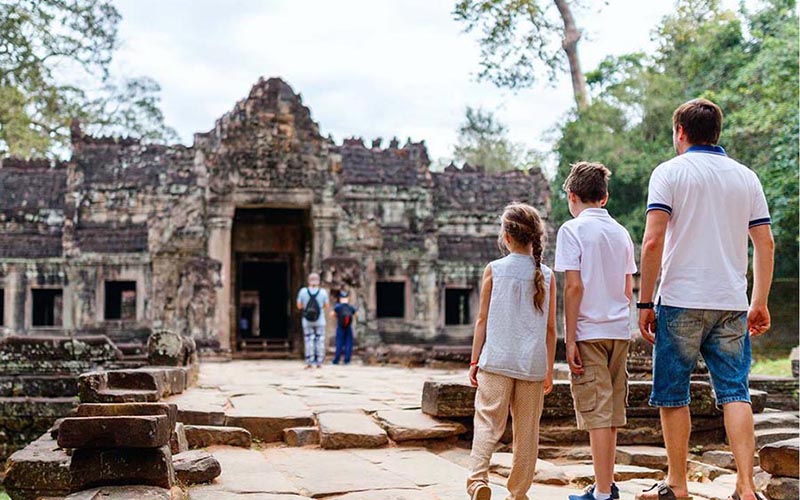
Have a great time exploring Cambodia ancient temples
Cambodia temples are not merely an assortment of ancient structures; they are the epitome of a civilization's rich heritage and the embodiment of devotion. Each stone speaks volumes about the triumphs and tribulations endured by the Khmer Empire. To explore more about Cambodia and Vietnam package tour, feel free to contact New Asia Tours!


